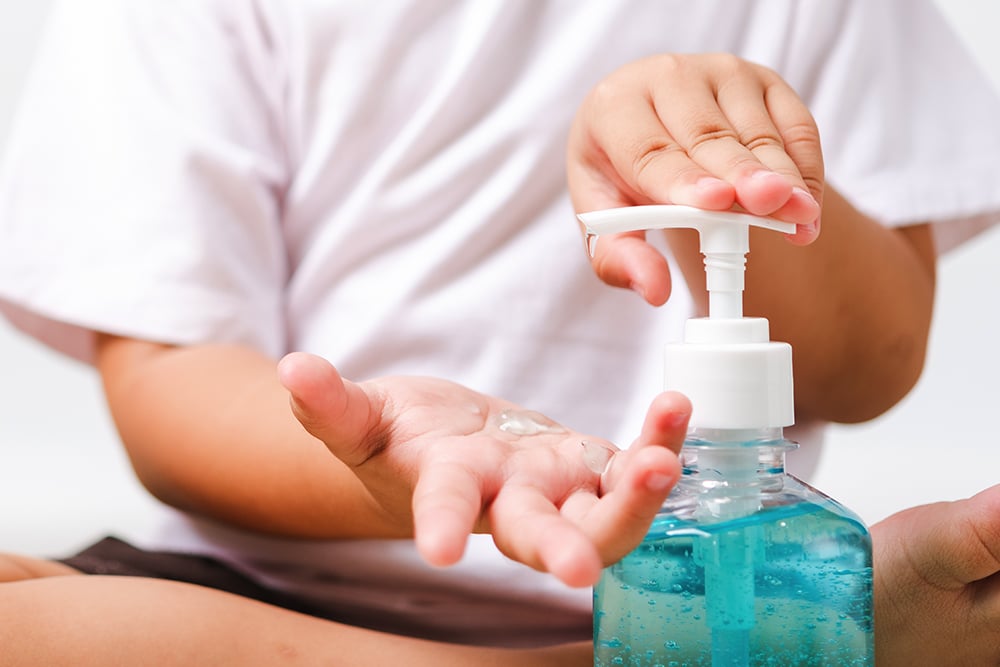We all understand that it’s critical to do everything we can to slow the spread of the coronavirus and its infectious disease, COVID-19. Unfortunately, as we work hard to keep our homes, schools and businesses disinfected, we’re exposing ourselves to chemicals that have serious health hazards associated with them, particularly for children and those with conditions like asthma and allergies. Experts are increasingly concerned about what the impact of this increased exposure will be for human health in the long term. Here’s what you need to know about the concern around increased exposure to disinfectants and how Force of Nature can help.
3 Reasons To Be Concerned About Increased Disinfectant Use
1. Many Cleaning Products Contain Ingredients That Are Known Health Hazards
Many of us wrongly assume that cleaning products, including disinfectants, are regulated. Most conventional cleaning products are not subject to testing or regulation and the usage of terms like “clean,” “non-toxic,” and “natural” are flimsy at best, so you can’t assume that because a brand says it’s clean or green that it has been certified to be safe by an overseeing agency. Many of these chemicals have not even been tested, so there is no way of knowing what their impact is overtime on our health. In fact, in an effort to protect the proprietary nature of their formulas, cleaning product manufacturers don’t need to disclose their ingredients! This is shocking considering we come into contact with these chemicals on a daily basis.
2. Being On EPA’s List N Does Not Mean A Disinfectant Is Safe
Disinfectants are regulated by the EPA, but only insofar as they must prove in testing that they kill the germs they say they kill within a specified period of time. The EPA regulates these antimicrobial agents and certifies them to display the term “disinfectant” on their label. In order for a product to be included on List N, the EPA’s list of disinfectants that have been approved for use against SARS-CoV-2, the manufacturer must prove the product disinfects surfaces from the novel coronavirus SARS-CoV-2, or a harder to kill virus. This does not, however, mean that it is a safe product for humans to come into contact with, particularly without protective gear.
Offices have increased daily cleaning to up to 6-8 times a day during the pandemic, which is concerning to experts, particularly as some of the cleaning methods include machines, like electrostatic sprayers, that aerosolize small droplets of cleaning solution, which can then be inhaled into our respiratory systems. Studies have shown that rodents have developed neurological, dermatological, and reproductive effects as well as increased respiratory ailments like asthma.
In an interview with Bloomberg, exposure scientist Lesliam Quirós-Alcalá, an assistant professor at Johns Hopkins Bloomberg School of Public Health stated, “Cleaning companies are selecting disinfectants from hundreds on List N, the month-old compendium of products approved by the Environmental Protection Agency to kill the novel coronavirus. Those chemicals have passed tests to show they’re effective against the pathogen, but “this doesn’t mean that they have been approved because they’re considered safe with regard to human health.”
3. Disinfectant Chemicals Are Putting Children At Risk
Children and infants are most at risk for exposure to these chemicals that can cause serious health problems. Relative to their size, children eat, drink, and breathe 3 times as much per round of body weight as adults do, which increases their exposure to environmental risk. They also (as any parent can attest) put things in their mouths constantly – including objects off the ground. Many of the body systems that are designed to protect us by processing chemicals in our environment are not completely developed in children and chemicals can disrupt their natural processes at work during stages of rapid development in childhood. The effect of this exposure is pronounced: researchers estimate that 5% of childhood cancer and 30% of childhood asthma are related to chemical exposures.
Sadly, accidental poisonings due to the consumption of cleaning supplies is not only common but on the rise during this pandemic. Reported poisonings from disinfectants rose 36% from 2019 to 2020, which includes cases of children drinking hand sanitizer, a product that contains a high level of alcohol.
Schools and daycares, which are feeling pressure to keep staff and children safe, are leaning on hospital-grade disinfectants like bleaches and “quats” (quaternary ammonium compounds) which can create chronic respiratory conditions, like asthma, through frequent exposure. Teachers, staff, and children are not trained to use professional disinfectant products like these and, though the CDC guides schools to ensure those using disinfectants should be properly trained and wearing protective gear, experts are concerned that they do not explicitly state that children should not be allowed to be near or use these products, which are easily absorbed through the skin.
The CDC’s 5 Steps For Disinfecting Safely
Follow these tips recommended by the Centers for Disease Control when disinfecting.
- Follow Labels
- Don’t Mix Chemicals
- Wear Protective Gear
- Use in a Well-Ventilated Area
- Store Chemicals Out of Reach of Children and Pets
There’s A Better way
This is an incredibly stressful time, but we are here to tell you that you can clean and disinfect without exposing your family to harmful chemicals. We are proud to offer a toxic chemical-free, gentle disinfectant that is included on the EPA’s List N, but also certified 100% skin-safe and best for sensitive skin by SkinSAFE, Mayo Clinic’s allergy rating system. Our superpower ingredient, Hypochlorous Acid (HOCl) has been used in medicine for decades with applications in wound care, veterinary medicine, ophthalmology, and dermatology – right now, to help treat and heal irritated skin and “maskne.” Force of Nature does not need to be rinsed and you can use it without gloves or masks. It’s free of top allergens and gentle enough to be used around children and adults with asthma or allergies.




